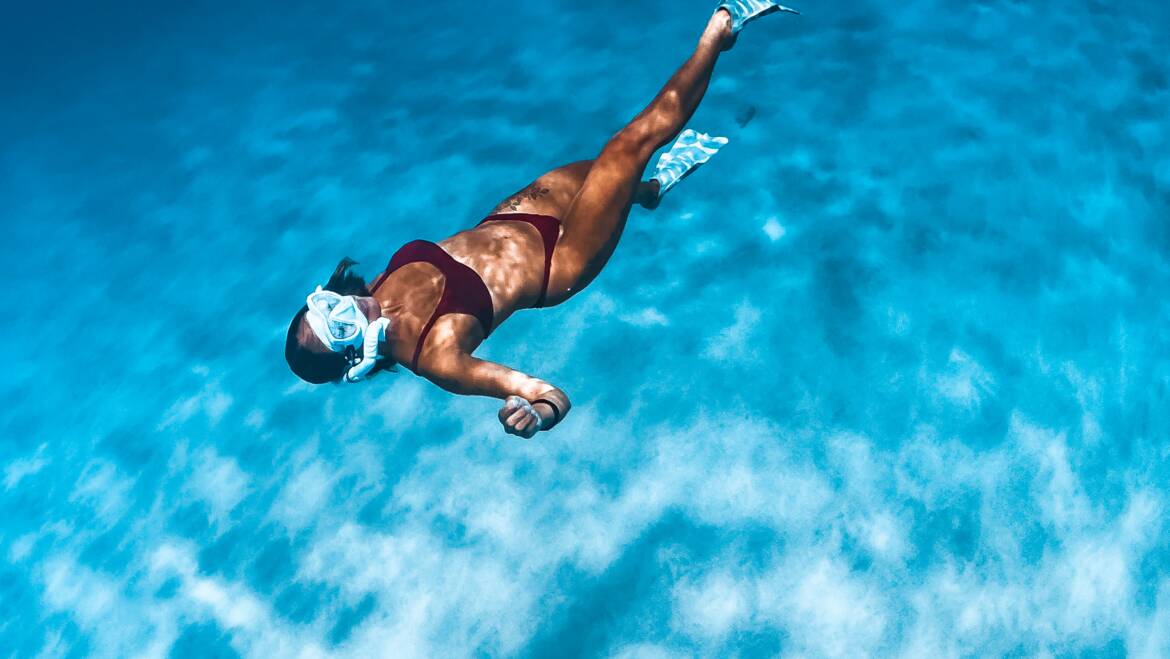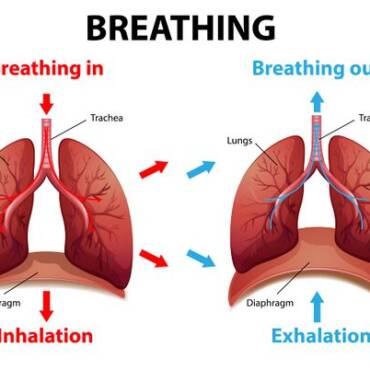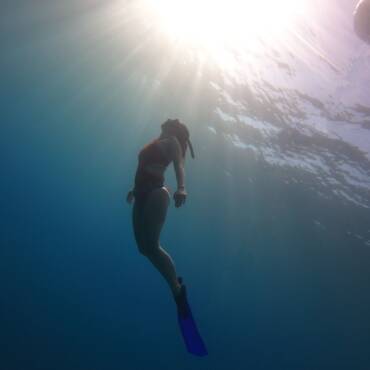What’s dynamic apnea training?
It’s a technique that freedivers use to boost their underwater breath-holding skills while gliding horizontally.
It’s different from static apnea, where you float on the water’s surface.
In dynamic apnea, you swim a set distance, like 25 meters (82 feet) or 50 meters (164 feet), all while holding your breath.
The aim?
To cover as much ground as possible while keeping your form and body position in check. Over time, you aim to swim even farther.
You can do this training in a pool or a confined water space. You’ve also got options when it comes to gear – fins, a monofin, bi-fins, or even no fins at all.
Most folks start with shorter distances and gradually work their way up as they get more comfortable.
What’s the big deal about dynamic apnea?
It’s like a full-body workout that builds up your muscle strength and endurance, which you need for those deep, extended dives. Plus, it teaches your body to use oxygen more efficiently, which is a handy skill for any freediver.
If you’re looking to up your game in dynamic apnea training for freediving, here are some pointers to keep in mind:
Start Small, Aim Big: Begin with shorter distances and progressively extend your swim as you gain confidence.
Choose Your Space: Opt for a pool or confined water for your dynamic apnea sessions. Regardless of whether you’re using a monofin, bi-fins, or no fins, focus on perfecting your technique and streamlining to boost your swim’s speed and efficiency.
Breathe Right: Practice proper breathing techniques. Take slow, relaxed breaths before and during your swim to conserve oxygen.
Recovery Matters: Always perform recovery breaths immediately after surfacing.
Technique Is Key: Strive to maintain excellent technique and body positioning while swimming. This reduces drag and enhances efficiency.
Team Up: Have a trained buddy or instructor by your side to monitor your progress and provide support.
Consistency Pays: Regular practice is the name of the game. Gradually increase the distance of your swims over time.
Mind Over Matter: Incorporate relaxation and mindfulness techniques into your dynamic apnea training to stay calm and focused.
Safety First: Follow safety protocols religiously and never push yourself beyond your limits.
Rest and Recovery: Remember to take breaks and rest between sets. Overexertion is a no-go.
Note: Image by Jess Loiterton





Add Comment